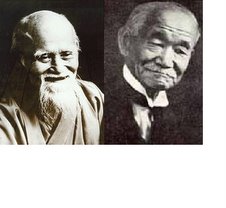Friday, May 29, 2009
Teaching Methods
Last week I had one observer and one participant in class. Both of them learn in very different ways and I tend to custom tailor my teaching as best as I can to whoever I'm teaching. After class the observer made a few observations (they've never done Aikido before) and remarked that they hoped if I taught them that I'd do it in a different manor. I would teach differently, but my initial thoughts were "If I'm teaching, I'll teach how I want" but it got me thinking. The methods we use to teach represent to others what the art is. If we use a lot of mysticism, then that's what the martial art is perceived to be and if we over simplify or over complicate a move, then the art is super easy or too hard. My question is, should a teacher of a martial art modify his teaching based on the student's feedback/criticism? I had students at first only want to see the advanced stuff so that obviously doesn't work. When I began at the Y, I had a student ONLY want to do a wrist release until it was perfect (in her mind) before moving on to the next thing, but Aikido is organic and needs to blend and chain together so that didn't work. However, if I become rigid in my teaching methods it might drive pupils away. What are some experiences any of you have had with any of this? I'm sure there have been teaching challenges for you Pat :)
Subscribe to:
Post Comments (Atom)



4 comments:
Teaching, in any context, is a delicate balance. You need to find what method suits the most students and use it but still accommodate the outliers whenever possible. At the same time, you have to keep in mind what needs to get done each class and make sure that happens.
I think it's always important to take into account the input of your students as well, but that doesn't mean doing what they want. When it comes down to it, you're the teacher. You know what they need to learn and they don't. You're bound to clash with a student from time to time. That's just the nature of people. You're not going to please everyone. Criticism from students should just be used to guide the nuances of your classes.
Also, I wouldn't say your "observer" really had no experience with aikido.
I agree with Aeralyn RE: "find what method suits the most students and use it but still accommodate the outliers "
but I would keep in mind who are your students and who are the outsiders, and what you owe to whom. In my class, I don't mind someone watching or trying it out (or even commenting from the sidelines), but my duties as a teacer are to my students - not my potential students or to an outside observer.
It's hard to say what I'd do when I wasn't there, but I think I'd be tempted to tell an observer that made a comment like that, "Well, you are welcome to not participate in this class."
To expand on my thoughts a bit, I'd say think of it in terms of a school class. Most students learn best by interactive learning, but some learn best through strictly auditory methods, group work, note taking, etc. So, understanding that, a teacher might try to incorporate the less common teaching styles to benefit the outlying students but they wouldn't alter their actual curriculum.
Oh, and I agree with Pat. Don't let observers/potential students talk smack. :)
Post a Comment